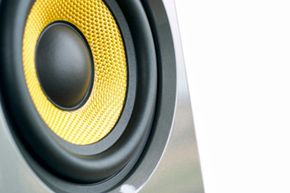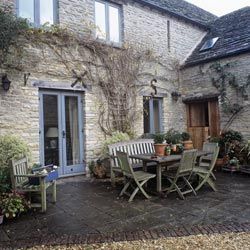You're at a theme park. The smell of funnel cakes has your mouth watering. Hundreds of happy people are walking in all directions around you. As you turn the corner, suddenly you brush up against the fronds of a giant jungle fern. The sounds of drums seem to come from off in the distance, and exotic birds of all kinds chirp and squawk from the trees. You look up, hoping to spot the vibrant plumage of a macaw, but instead see the corner of a carefully camouflaged speaker. Next to you, another speaker camouflaged as a rock provides the sound of a rushing river.
You chuckle to yourself as you've figured out the secret, and marvel at the time and effort put into making the environment so immersive. And then suddenly it strikes you -- this expensive electronic equipment stays outside all day, every day. What keeps it from shorting out when it rains? For that matter, these speakers are out in the blistering heat in summer and the freezing cold of winter. Why do they still work so well, despite their exposure to the elements?
Advertisement
Two interesting cultural shifts have given us much better options for enjoying music outdoors. One is evolution in consumer electronics toward portable devices, as evidenced by the increase of popular devices on the market such as smartphones, tablets and MP3 players. Second is the rising popularity of a consumer category called outdoor living. Sunrooms, cupolas, decks, gardens, patios and poolside cabanas have become a more common part of home life. Audio equipment has followed suit to meet these consumer demands.
Speakers and sound systems are now manufactured to be outdoors 24/7, thanks to advanced materials technology. But underneath the weatherproofing, the speakers themselves aren't much different from the type you have in your living room. In fact, they operate on the very same principles. A speaker's job is to take electrical signals and turn them into the mechanical energy that creates a disturbance in the air that we can hear.
Advertisement



